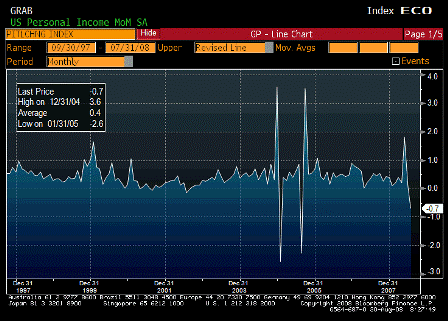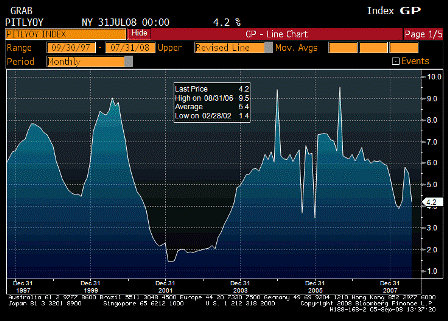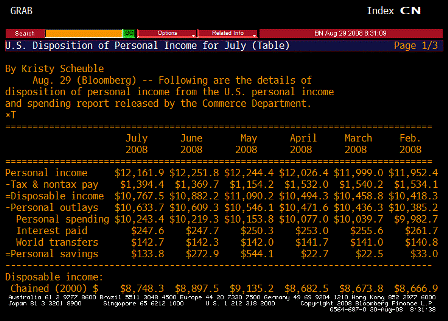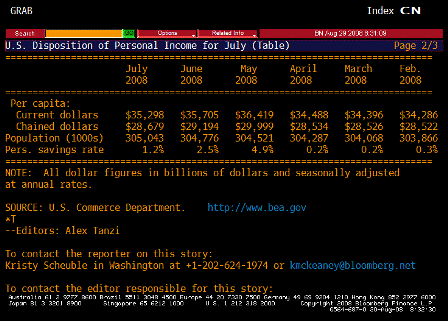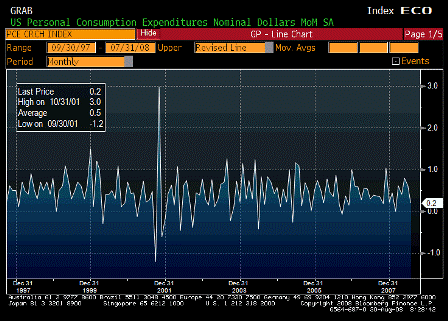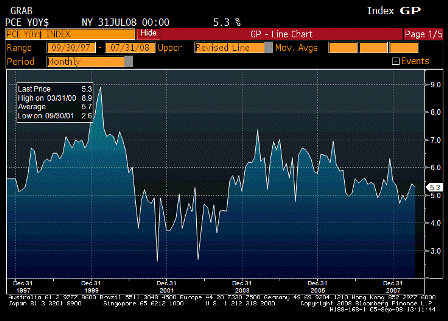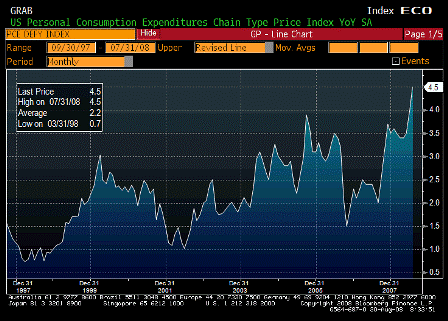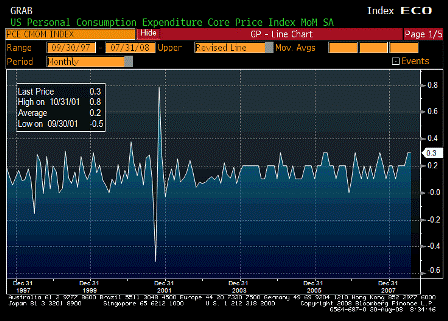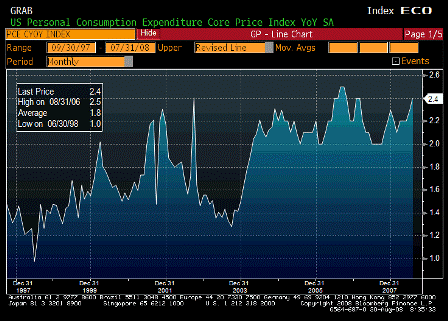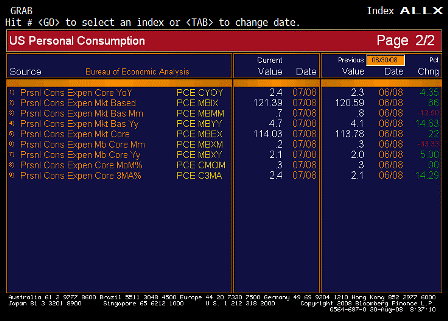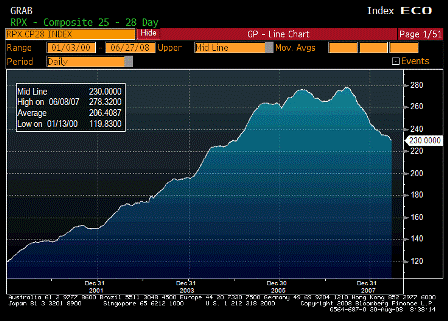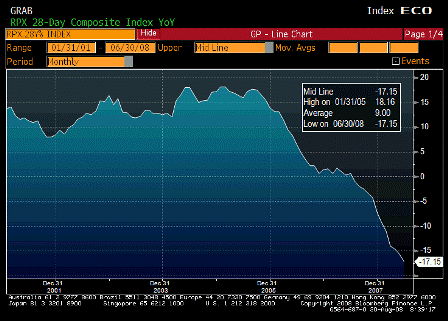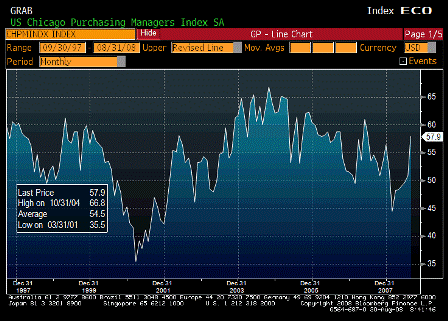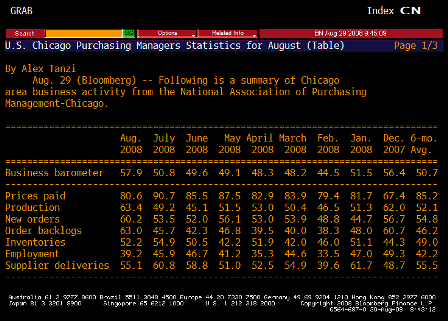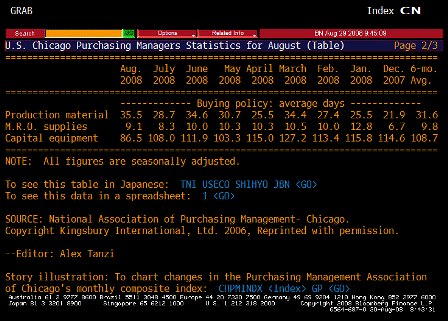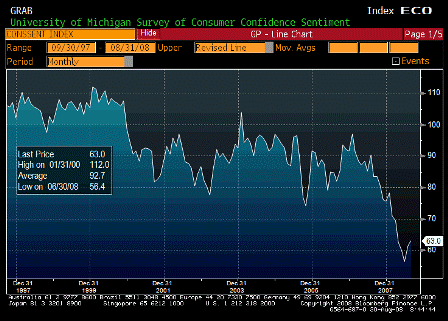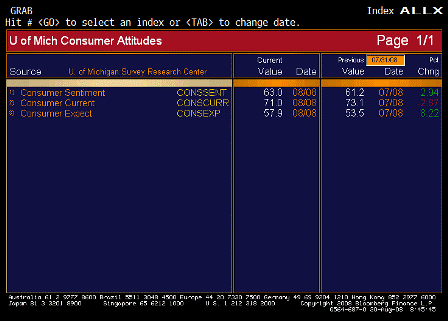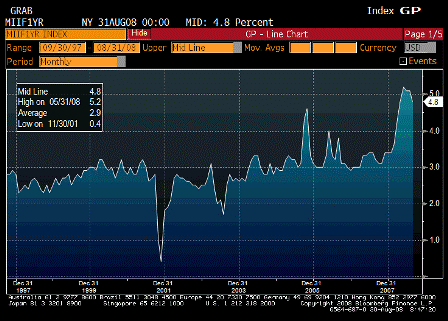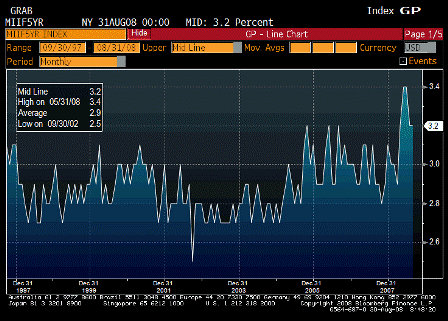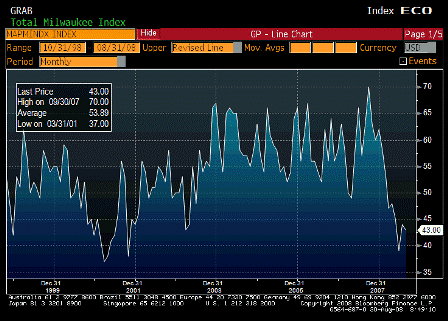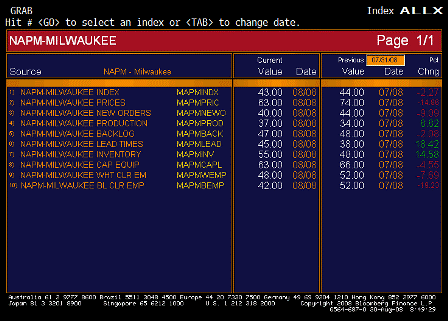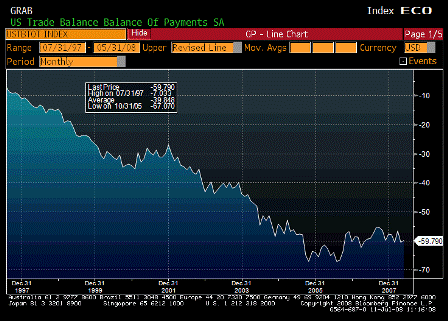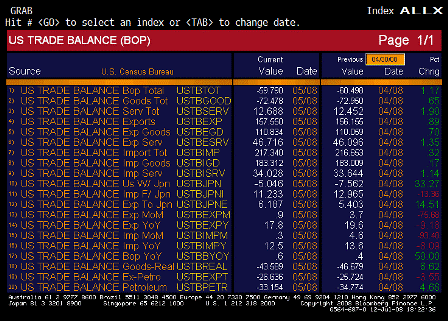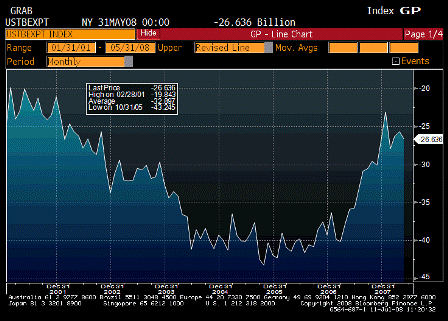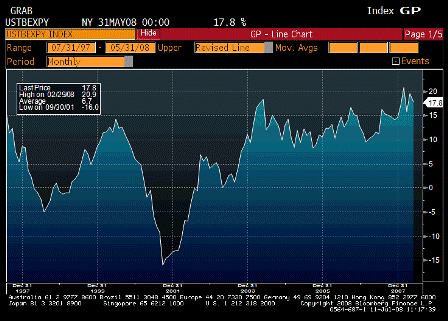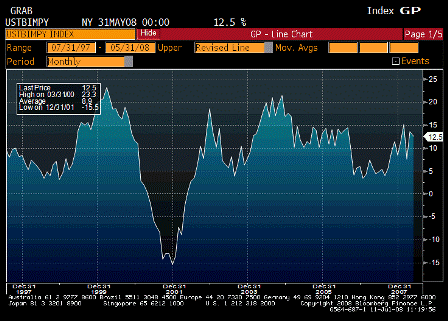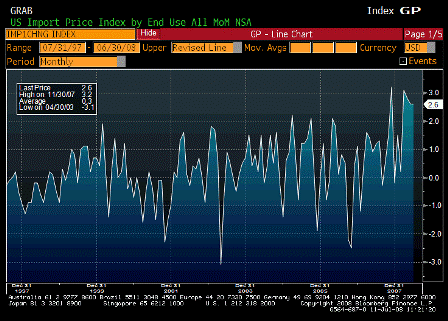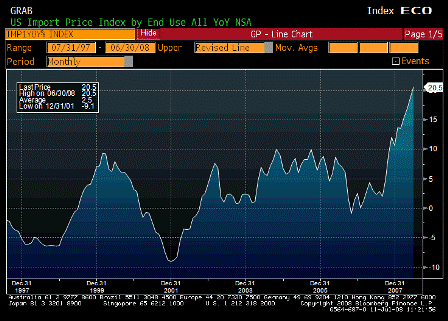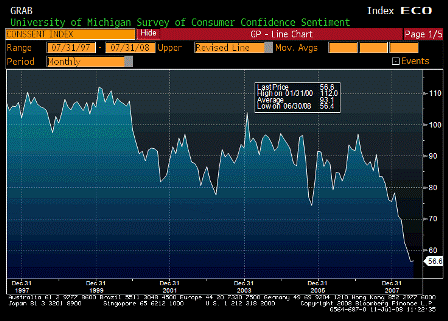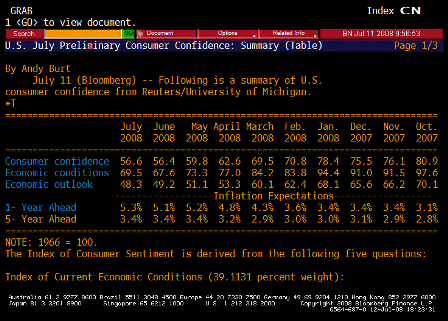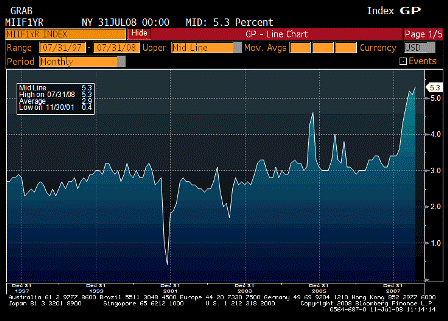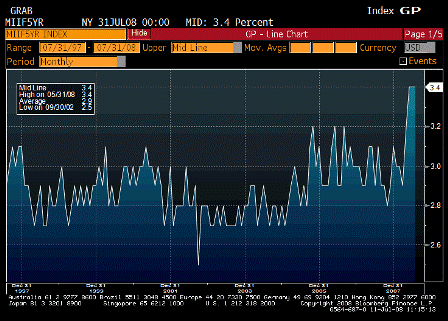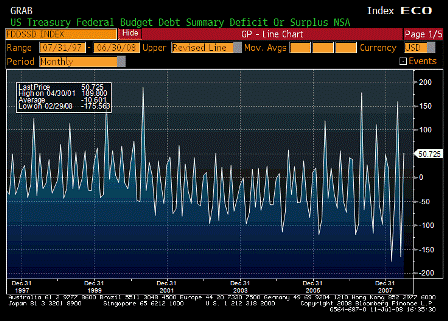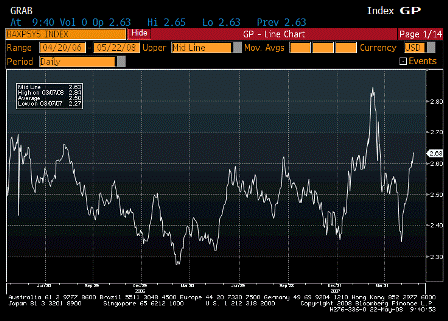[Skip to the end]
Outstanding Issues in the Analysis of Inflation
Nonetheless, much remains to be learned about both inflation forecasting and inflation control. In the spirit of this conference, my remarks this evening will highlight some key areas where additional research could help to provide a still-firmer foundation for monetary policymaking.
Good start!
Before turning to those issues, however, I would like to provide a brief update on the outlook for the economy and policy, beginning with the prospects for growth. Despite the unwelcome rise in the unemployment rate that was reported last week, the recent incoming data, taken as a whole, have affected the outlook for economic activity and employment only modestly. Indeed, although activity during the current quarter is likely to be weak, the risk that the economy has entered a substantial downturn appears to have diminished over the past month or so. Over the remainder of 2008, the effects of monetary and fiscal stimulus, a gradual ebbing of the drag from residential construction, further progress in the repair of financial and credit markets, and still-solid demand from abroad should provide some offset to the headwinds that still face the economy. However, the ongoing contraction in the housing market and continuing increases in energy prices suggest that growth risks remain to the downside.
Downside risks diminished, but still remain.
One of the most effective means by which the Federal Reserve can help to restore moderate growth over time and to reduce the associated downside risks is by supporting the return of financial markets to more-normal functioning. We have taken a number of actions to promote financial stability and remain strongly committed to that objective.
Technical market functioning action vs. interest rate cuts.
Inflation has remained high, largely reflecting sharp increases in the prices of globally traded commodities. Thus far, the pass-through of high raw materials costs to the prices of most other products and to domestic labor costs has been limited, in part because of softening domestic demand. However, the continuation of this pattern is not guaranteed and future developments in this regard will bear close attention. Moreover, the latest round of increases in energy prices has added to the upside risks to inflation and inflation expectations. The Federal Open Market Committee will strongly resist an erosion of longer-term inflation expectations, as an unanchoring of those expectations would be destabilizing for growth as well as for inflation.
Upside risks to inflation and inflation expectations have increased as the downside risks to growth have diminished.
Turning now to the principal topic of my remarks, I will briefly touch on four topics of particular interest for policymakers: commodity prices and inflation, the role of labor costs in the price-setting process, issues arising from the necessity of making policy in real time, and the determinants and effects of changes in inflation expectations.
Commodity Prices and Inflation
Rapidly rising prices for globally traded commodities have been the major source of the relatively high rates of inflation we have experienced in recent years, underscoring the importance for policy of both forecasting commodity price changes and understanding the factors that drive those changes.
Policymakers and other analysts have often relied on quotes from commodity futures markets to derive forecasts of the prices of key commodities. However, as you know, futures markets quotes have underpredicted commodity price increases in recent years, leading to corresponding underpredictions of overall inflation. The poor recent record of commodity futures markets in forecasting the course of prices raises the question of whether policymakers should continue to use this source of information and, if so, how.
It’s worse – they have been reading the market information incorrectly, confusing the difference between perishable from non-perishable commodities in regards to the term structures of futures contracts.
Despite this recent record, I do not think it is reasonable, when forecasting commodity prices, to ignore the substantial amounts of information about supply and demand conditions that are aggregated by futures markets. Indeed, the use of some simple alternatives–such as extrapolating recent commodity price trends–would require us to assume that investors in commodity futures can expect to earn supernormal risk-adjusted returns, inconsistent with principles of financial arbitrage. However, it does seem reasonable–and consistent with the wide distributions of commodity price expectations implied by options prices–to treat the forecasts of commodity prices obtained from futures markets, and consequently the forecasts of aggregate price inflation, as highly uncertain.
Futures markets for non-perishables express inventory conditions, not price expectations per se.
These considerations raise several questions for researchers: First, is it possible to improve our forecasts of commodity prices, using information from futures markets but possibly other information as well? For example, the markets for longer-dated futures contracts are often quite illiquid, suggesting that the associated futures prices may not effectively aggregate all available information. Second, what are the implications for the conduct of monetary policy of the high degree of uncertainty that attends forecasts of commodity prices? Although theoretical analyses often focus on the case in which policymakers care only about expected economic outcomes and not the uncertainty surrounding those outcomes, in practice policymakers are concerned about the risks to their projections as well as the projections themselves. How should those concerns affect the setting of policy in this context?
They need to understand what futures markets for non-perishables express.
Empirical work on inflation, including much of the classic work on Phillips curves, has generally treated changes in commodity prices as an exogenous influence on the inflation process, driven by market-specific factors such as weather conditions or geopolitical developments.
Or imperfect competition? Like the Saudis and/or Russians and/or Iranians setting price?
By contrast, some analysts emphasize the endogeneity of commodity prices to broad macroeconomic and monetary developments such as expected growth, expected inflation, interest rates, and currency movements. Of course, in reality, commodity prices are influenced by both market-specific and aggregate factors. Market-specific influences are evident in the significant differences in price behavior across individual commodities, which often can be traced to idiosyncratic supply and demand factors. Aggregate influences are suggested by the fact that the prices of several major classes of commodities, including energy, metals, and grains, have all shown broad-based gains in recent years. In particular, it seems clear that commodity prices have been importantly influenced by secular global trends affecting the conditions of demand and supply for raw materials.
And at least some influence from pension funds engaging in passive commodity strategies?
We have seen rapid growth in the worldwide demand for raw materials, which in turn is largely the result of sustained global growth–particularly resources-intensive growth in emerging market economies. And factors including inadequate investment, long lags in the development of new capacity, and underlying resource constraints have caused the supplies of a number of important commodity classes, including energy and metals, to lag global demand. These problems have been exacerbated to some extent by a systematic underprediction of demand and overprediction of productive capacity for a number of key commodities, notably oil. Further analysis of the range of aggregate and idiosyncratic determinants of commodity prices would be fruitful.
And biofuels converting our food supply to energy, thus linking the price of the two?
I have only mentioned a few of the issues raised by commodity price behavior for inflation and monetary policy. Here are a few other questions that researchers could usefully address: First, how should monetary policy deal with increases in commodity prices that are not only large but potentially persistent?
Attempt to add to demand with aggressive rate cuts like the FOMC has done?
Second, does the link between global growth and commodity prices imply a role for global slack, along with domestic slack, in the Phillips curve? Finally, what information about the broader economy is contained in commodity prices? For example, what signal should we take from recent changes in commodity prices about the strength of global demand or about expectations of future growth and inflation?
Or the emergence of imperfect competition and price setters as excess capacity dwindles?
The Role of Labor Costs in Price Setting
Basic microeconomics tells us that marginal cost should play a central role in firms’ pricing decisions.
More precisely, they have been assuming pricing where marginal cost and marginal revenue curves cross, not cost plus pricing.
And, notwithstanding the effects of changes in commodity prices on the cost of production, for the economy as a whole, by far the most important cost is the cost of labor.
Yes, and the cost of labor is also closely tied to the share of the output that goes to labor.
Over the past decade, formal work in the modeling of inflation has treated marginal cost, particularly the marginal cost of labor, as central to the determination of inflation.2 However, the empirical evidence for this linkage is less definitive than we would like.
‘Like’??? Yes, they blamed labor unions for the 1970s inflation, and now they would ‘like’ support for that presumption?
This mixed evidence is one reason that much Phillips curve analysis has centered on price-price equations with no explicit role for wages.
Problems in the measurement of labor costs may help explain the absence of a clearer empirical relationship between labor costs and prices. Compensation per hour in the nonfarm business sector, a commonly used measure of labor cost, displays substantial volatility from quarter to quarter and year to year, is often revised significantly, and includes compensation that is largely unrelated to marginal costs–for example, exercises (as opposed to grants) of stock options. These and other problems carry through to the published estimates of labor’s share in the nonfarm business sector–the proxy for real marginal cost that is typically used in empirical work. A second commonly used measure of aggregate hourly labor compensation, the employment cost index, has its own set of drawbacks as a measure of marginal cost. Indeed, these two compensation measures not infrequently generate conflicting signals of trends in labor costs and thus differing implications for inflation.
The interpretation of changes in labor productivity also affects the measurement of marginal cost. As economists have recognized for half a century, labor productivity tends to be procyclical, in contrast to the theoretical prediction that movements along a stable, conventional production function should generate countercyclical productivity behavior. Many explanations for procyclical productivity have been advanced, ranging from labor hoarding in downturns to procyclical technological progress. A better understanding of the observed procyclicality of productivity would help us to interpret cyclical movements in unit labor costs and to better measure marginal cost.
The relationship between marginal cost, properly measured, and prices also depends on the markups that firms can impose.
Right, this assumes they attempt to price where marginal cost curves cross with marginal revenue curves.
One important open question is the degree to which variation over time in average markups may be obscuring the empirical link between prices and labor costs. Considerable work has also been done on the role of time-varying markups in the inflation process, but a consensus on the role of changing markups on the inflation process remains elusive. More research in this area, particularly with an empirical orientation, would be welcome.
Real-Time Policymaking
The measurement issues I just raised point to another important concern of policymakers, namely, the necessity of making decisions in “real time,” under conditions of great uncertainty–including uncertainty about the underlying state of the economy–and without the benefit of hindsight.
In the context of Phillips curve analysis, a number of researchers have highlighted the difficulty of assessing the output gap–the difference between actual and potential output–in real time. An inability to measure the output gap in real time obviously limits the usefulness of the concept in practical policymaking. On the other hand, to argue that output gaps are very difficult to measure in real time is not the same as arguing that economic slack does not influence inflation; indeed, the bulk of the evidence suggests that there is a relationship, albeit one that may be less pronounced than in the past.
That’s a big issue. They suspect the Phillips Curve is very flat, which means large changes in the output gap are needed to change the price level.
These observations suggest two useful directions for research: First, more obviously, there is scope to continue the search for measures or indicators of output gaps that provide useful information in real time. Second, we need to continue to think through the decision procedures that policymakers should use under conditions of substantial uncertainty about the state of the economy and underlying economic relationships. For example, even if the output gap is poorly measured, by taking appropriate account of measurement uncertainties and combining information about the output gap with information from other sources, we may be able to achieve better policy outcomes than would be possible if we simply ignored noisy output gap measures. Of course, similar considerations apply to other types of real-time economic information.
This is particularly problematic as ultimately they see their role as altering the output gap to control inflation expectations.
Inflation itself can pose real-time measurement challenges. We have multiple measures of inflation, each of which reflects different coverage, methods of construction, and seasonality, and each of which is subject to statistical noise arising from sampling, imputation of certain prices, and temporary or special factors affecting certain markets. From these measures and other information, policymakers attempt to infer the “true” underlying rate of inflation. In other words, policymakers must read the incoming data in real time to judge which changes in inflation are likely to be transitory and which may prove more persistent.
Seems more important for the FOMC should be to determine what measure of inflation, if held stable, optimizes long-term growth and employment? Without that, what do they have under mainstream theory?
Getting this distinction right has first-order implications for monetary policy: Because monetary policy works with a lag, policy should be calibrated based on forecasts of medium-term inflation, which may differ from the current inflation rate. The need to distinguish changes in the inflation trend from temporary movements around that trend has motivated attention to various measures of “core,” or underlying, inflation, including measures that exclude certain prices (such as those of food and energy), “trimmed mean” measures, and others, but other approaches are certainly worth consideration.8 Further work on the problem of filtering the incoming data so as to obtain better measures of the underlying inflation trend could be of great value to policymakers.
I’m sure they are troubled about cutting rates into a triple negative supply shock based on forecasts of lower inflation that didn’t materialize.
The necessity of making policy in real time highlights the importance of maintaining and improving the economic data infrastructure and, in particular, working to make economic data timelier and more accurate. I noted earlier the problems in interpreting existing measures of labor compensation. Significant scope exists to improve the quality of price data as well–for example, by using the wealth of information available from checkout scanners or finding better ways to adjust for quality change. I encourage researchers to become more familiar with the strengths and shortcomings of the data that they routinely use. Besides leading to better analysis, attention to data quality issues by researchers often leads to better data in the longer term, both because of the insights generated by research and because researchers are important and influential clients of data collection agencies.
Implying that ‘if only they had better data they might not have made the same decisions’.
Inflation Expectations
Finally, I will say a few words on inflation expectations, which most economists see as central to inflation dynamics.
All mainstream economists. As Vice Chairman Kohn stated a few years ago, ‘the entire success of the US economy over the last twenty years can be attributed to successfully controlling inflation expectations’.
But there is much we do not understand about inflation expectations, their determination, and their implications. I will divide my list of questions into three categories.
First, we need to understand better the factors that determine the public’s inflation expectations. As I discussed in some detail in a talk at the National Bureau of Economic Research last summer, much evidence suggests that expectations have become better anchored than they were a few decades ago, but that they nonetheless remain imperfectly anchored. It would be quite useful for policymakers to know more about how inflation expectations are influenced by monetary policy actions, monetary policy communication, and other economic developments such as oil price shocks.
The growing literature on learning in macroeconomic models appears to be a useful vehicle to address many of these issues.10 In a traditional model with rational expectations, a fixed economic structure, and stable policy objectives, there is no role for learning by the public. In such a model, there is generally a unique long-run equilibrium inflation rate which is fully anticipated; in particular, the public makes no inferences based on central bankers’ words or deeds. But in fact, the public has only incomplete information about both the economy and policymakers’ objectives, which themselves may change over time. Allowing for the possibility of learning by the public is more realistic and tends to generate more reasonable conclusions about how inflation expectations change and, in particular, about how they can be influenced by monetary policy actions and communications.
Yes, the mainstream does consider that a serious topic of discussion!
The second category of questions involves the channels through which inflation expectations affect actual inflation. Is the primary linkage from inflation expectations to wage bargains, or are other channels important? One somewhat puzzling finding comes from a survey of business pricing decisions conducted by Blinder, Canetti, Lebow, and Rudd, in which only a small share of respondents claimed that expected aggregate inflation affected their pricing at all. How do we reconcile this result with our strong presumption that expectations are of central importance for explaining inflation?
Easy – they don’t matter at all. But then they are left with no theory of the price level, apart from the relative prices; so, they MUST matter.
Perhaps expectations affect actual inflation through some channel that is relatively indirect. The growing literature on disaggregated price setting may be able to shed some light on this question.
Good luck.
Finally, a large set of questions revolve around how the central bank can best monitor the public’s inflation expectations. Many measures of expected inflation exist, including expectations taken from surveys of households, forecasts by professional economists, and information extracted from markets for inflation-indexed securities. Unfortunately, only very limited information is available on expectations of price-setters themselves, namely businesses. Which of these agents’ expectations are most important for inflation dynamics, and how can central bankers best extract the relevant information from the various available measures?
Someday they will realize the currency itself is a simple public monopoly, and the price level is necessarily a function of prices paid by government. But that someday is nowhere in site; so, keep your eye on what they consider inflation expectations for clues to their next move.
Conclusion
This evening I have touched on only a few of the questions that confront policymakers as we deal with the challenges we face. The contributions of economic researchers in helping us to address these and other important questions have been and will continue to be invaluable. I will conclude by offering my best wishes for an interesting and productive conference.
[top]

